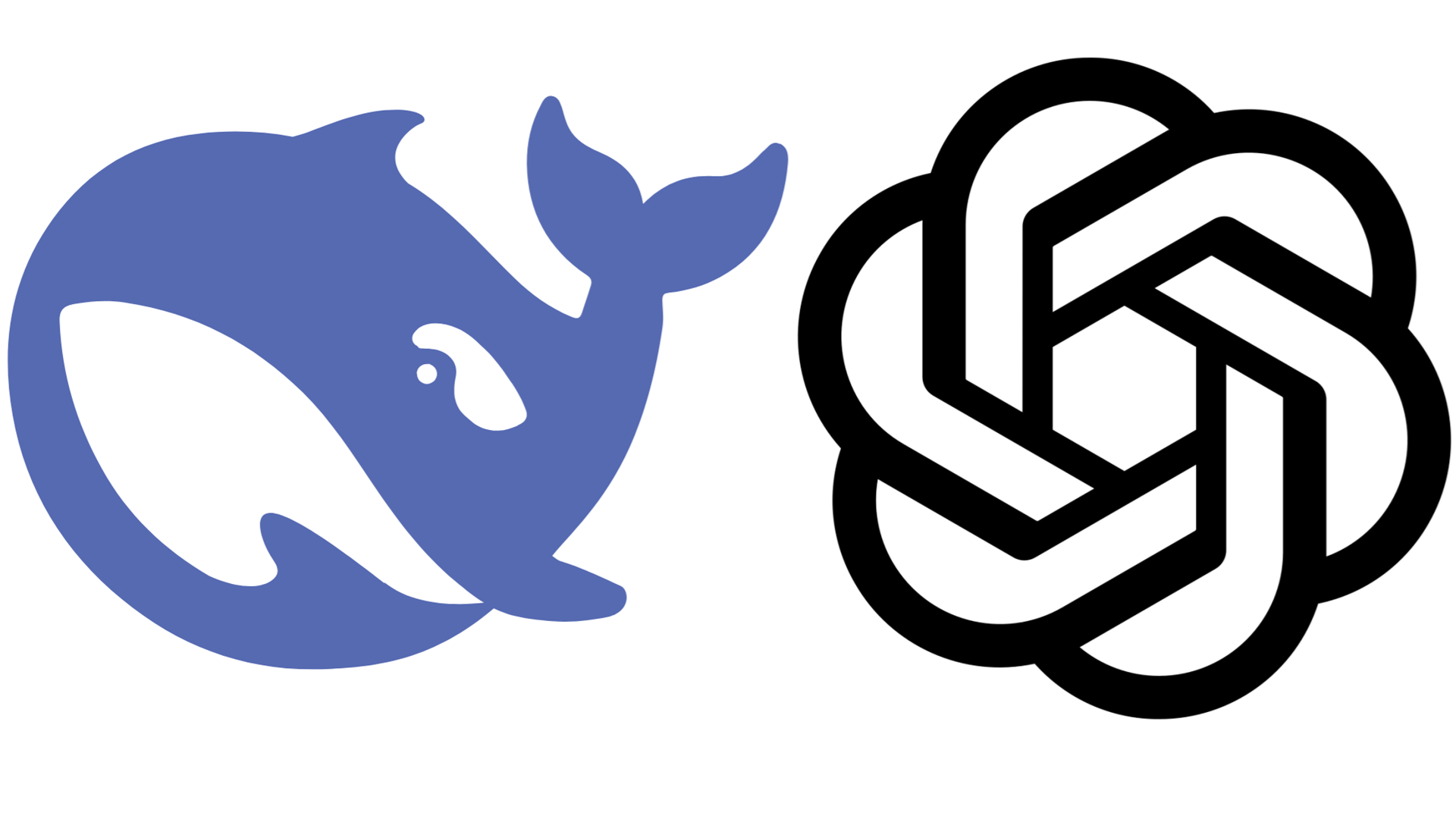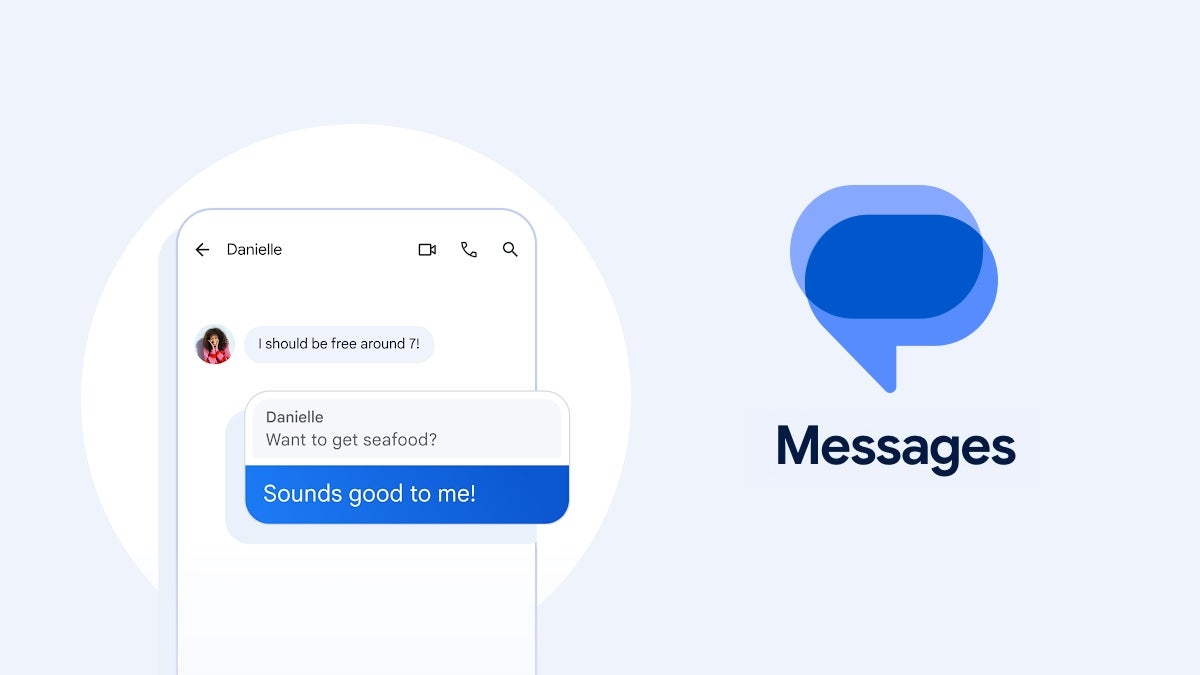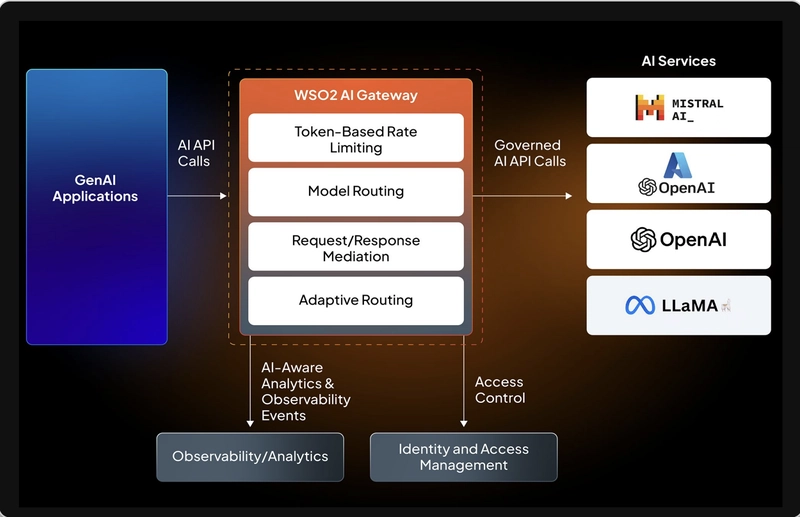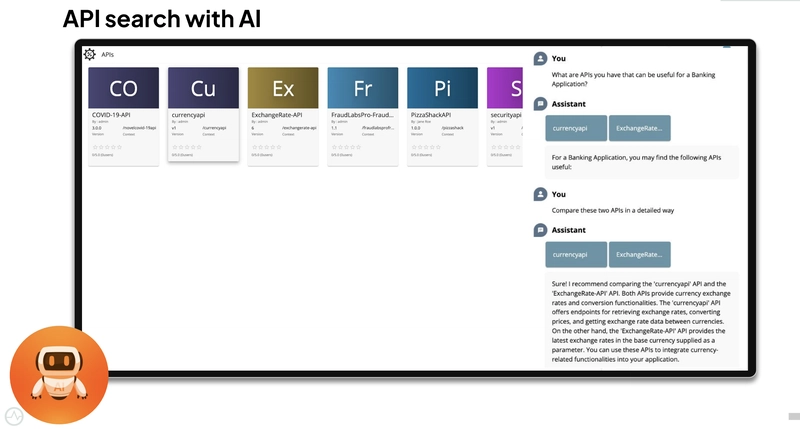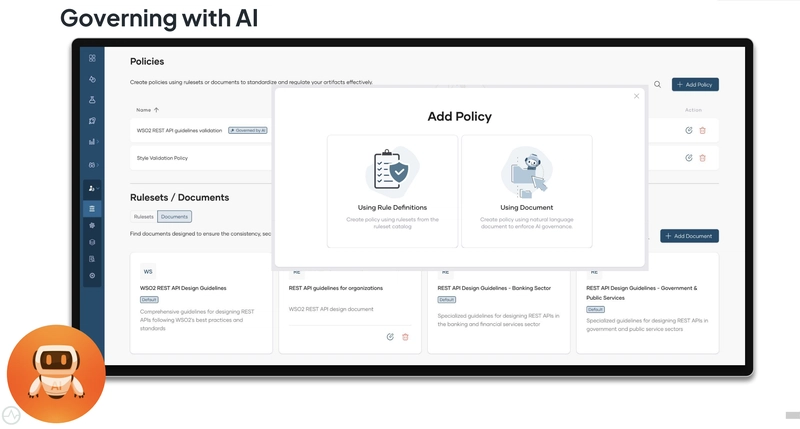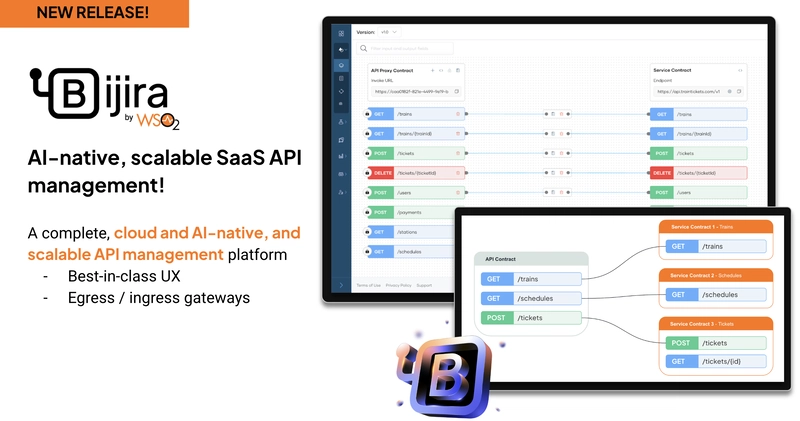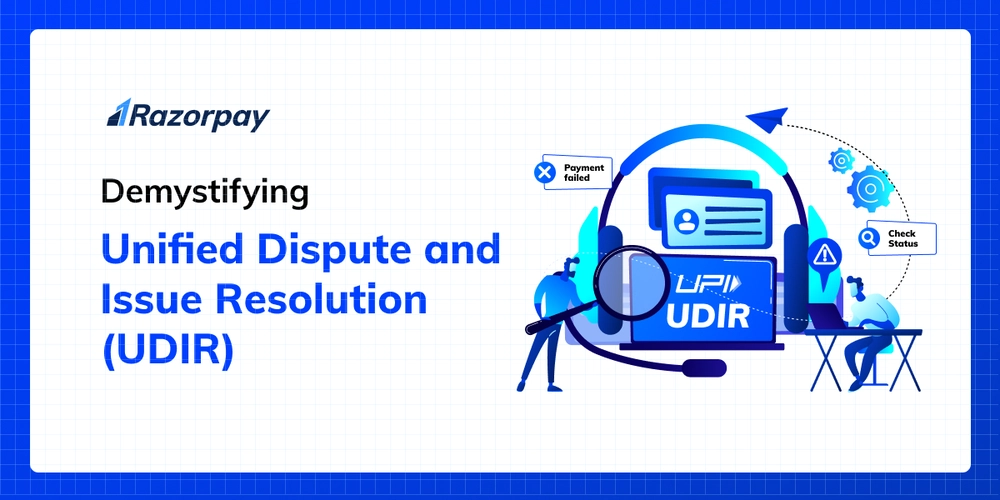All Your APIs, One Control Plane: What's New in WSO2 API Manager’s Latest Release
If your day-to-day involves juggling APIs across multiple environments, tools, teams, and now (thanks to 2024—AI services) you’re not alone. And if it sometimes feels like you’re stitching together a modern API architecture with duct tape, this one’s for you. The March 2025 release of WSO2 API Manager is here, and it brings real improvements for developers managing the chaos behind modern digital systems. Whether you’re deep in Kubernetes, stuck wrangling third-party SaaS APIs, or trying to rein in LLM access across teams, this release is packed with tools to help you build, govern, and ship APIs faster and safer. Here’s a rundown of what’s new—and why it actually matters in real-world dev workflows. Universal API Governance: One Pane of Glass Need a single place to see and control everything, the APIs you build and the ones you consume? The latest release doubles down on the universal control plane. You can now manage and monitor all your APIs—no matter where they’re running—from one dashboard. And we don’t mean just WSO2 gateways. This release introduces full support for: WSO2 Universal Gateway WSO2 Kubernetes Gateway WSO2 Immutable Gateway AWS API Gateway Solace Gateway Taming the AI Chaos with an AI Gateway Let’s face it, AI integration in teams often feels like the wild west. One developer’s calling GPT from staging, another’s running fine-tuned LLMs locally, and nobody has a clue who’s using what or where the data’s going. Governance? What governance? That’s exactly why WSO2 introduced its AI API Gateway—and with this release, it’s getting even smarter. Already, the gateway supports: Token-based rate limits AI usage analytics Secure API management for services like Azure, OpenAI and Mistral Fine-grained access control Visibility into API consumption and usage patterns But the real game-changer in this release? Multi-Model Routing. This new capability allows you to: Distribute requests across multiple AI models Dynamically route traffic based on performance, availability, or cost Scale AI-powered applications without adding operational chaos Oh, and yes, all of this works with the rest of your APIs, just like any other API Gateway feature in WSO2 API Manager. AI-Assisted API Design — Just Describe It Tired of writing OpenAPI specs from scratch? We get it. The new AI Designer lets you build an API from a simple prompt: "Create a REST API for managing warehouse inventory" You’ll get an OpenAPI spec, proxy setup, and can deploy it to your preferred gateway—without digging through documentation or boilerplate. AI Search Assistant — Find What You Forgot You Built If your company has 500+ APIs and your team keeps re-implementing the same stuff, the AI Search Assistant is a lifesaver. It lets you search your entire API catalog using natural language: “Find a payments API that supports recurring billing” “Compare FX conversion APIs” “What’s the FHIR API for lab test submissions?” You get usable results, comparisons, and even docs—without guessing endpoint names or reading 20 swagger files. AI-Assisted Testing: Try It Before You Build On It Once you find an API, testing it should be dead simple. That’s why we now support AI-assisted scenario testing: Ask for specific use cases: > “Test placing an order and shipping it” Automatically generate JSON payloads and simulate full workflows Understand how resources interact, not just how they’re documented This means consumers (and testers!) can evaluate APIs faster, reducing friction and support time. Governing with AI — Turn That 100-Page Doc into Policy Have you got API standards and security docs sitting in SharePoint? What if you could turn that into actual policy enforcement? Now you can. You can upload design guidelines or policy docs in plain English, and the AI will convert them into actionable governance rules—no need to write Spectral rules manually. You get compliance dashboards, alerts, and coverage across your entire API ecosystem. Coming Soon: API Tools for Agents via MCP Large Language Models and AI agents don’t just need APIs, they need them to be discoverable and usable. That’s where MCP (Model Context Protocol) comes in. We will provide native support so your APIs can: Be consumed by agents directly from the gateway Interact with LLMs using standard protocols Play a first-class role in agent-driven architectures In short: if you’re planning an AI-driven future, we’re building the infrastructure to support it. Want SaaS? Try Bijira — Built for API Management Prefer a fully managed option? Check out Bijira, our new SaaS API management platform. It's built on Choreo’s rock-solid backend (so you still get observability, org/project management, etc.), but it’s focused on API workflows. Bijira includes: A redesigned developer-friendly UX Visual tools to compose ingress and egress API
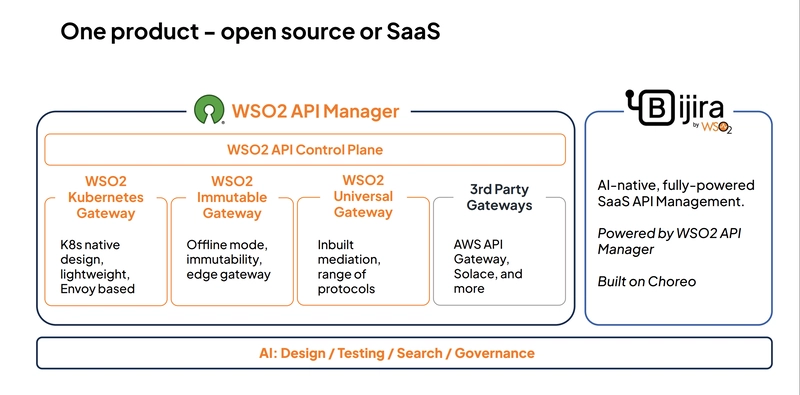
If your day-to-day involves juggling APIs across multiple environments, tools, teams, and now (thanks to 2024—AI services) you’re not alone. And if it sometimes feels like you’re stitching together a modern API architecture with duct tape, this one’s for you.
The March 2025 release of WSO2 API Manager is here, and it brings real improvements for developers managing the chaos behind modern digital systems. Whether you’re deep in Kubernetes, stuck wrangling third-party SaaS APIs, or trying to rein in LLM access across teams, this release is packed with tools to help you build, govern, and ship APIs faster and safer.
Here’s a rundown of what’s new—and why it actually matters in real-world dev workflows.
Universal API Governance: One Pane of Glass
Need a single place to see and control everything, the APIs you build and the ones you consume?
The latest release doubles down on the universal control plane. You can now manage and monitor all your APIs—no matter where they’re running—from one dashboard. And we don’t mean just WSO2 gateways. This release introduces full support for:
- WSO2 Universal Gateway
- WSO2 Kubernetes Gateway
- WSO2 Immutable Gateway
- AWS API Gateway
- Solace Gateway
Taming the AI Chaos with an AI Gateway
Let’s face it, AI integration in teams often feels like the wild west. One developer’s calling GPT from staging, another’s running fine-tuned LLMs locally, and nobody has a clue who’s using what or where the data’s going. Governance? What governance?
That’s exactly why WSO2 introduced its AI API Gateway—and with this release, it’s getting even smarter.
Already, the gateway supports:
- Token-based rate limits
- AI usage analytics
- Secure API management for services like Azure, OpenAI and Mistral
- Fine-grained access control
- Visibility into API consumption and usage patterns
But the real game-changer in this release? Multi-Model Routing. This new capability allows you to:
- Distribute requests across multiple AI models
- Dynamically route traffic based on performance, availability, or cost
- Scale AI-powered applications without adding operational chaos
Oh, and yes, all of this works with the rest of your APIs, just like any other API Gateway feature in WSO2 API Manager.
AI-Assisted API Design — Just Describe It
Tired of writing OpenAPI specs from scratch? We get it. The new AI Designer lets you build an API from a simple prompt:
"Create a REST API for managing warehouse inventory"
You’ll get an OpenAPI spec, proxy setup, and can deploy it to your preferred gateway—without digging through documentation or boilerplate.
AI Search Assistant — Find What You Forgot You Built
If your company has 500+ APIs and your team keeps re-implementing the same stuff, the AI Search Assistant is a lifesaver.
It lets you search your entire API catalog using natural language:
“Find a payments API that supports recurring billing”
“Compare FX conversion APIs”
“What’s the FHIR API for lab test submissions?”
You get usable results, comparisons, and even docs—without guessing endpoint names or reading 20 swagger files.
AI-Assisted Testing: Try It Before You Build On It
Once you find an API, testing it should be dead simple. That’s why we now support AI-assisted scenario testing:
- Ask for specific use cases: > “Test placing an order and shipping it”
- Automatically generate JSON payloads and simulate full workflows
- Understand how resources interact, not just how they’re documented
This means consumers (and testers!) can evaluate APIs faster, reducing friction and support time.
Governing with AI — Turn That 100-Page Doc into Policy
Have you got API standards and security docs sitting in SharePoint? What if you could turn that into actual policy enforcement?
Now you can.
You can upload design guidelines or policy docs in plain English, and the AI will convert them into actionable governance rules—no need to write Spectral rules manually. You get compliance dashboards, alerts, and coverage across your entire API ecosystem.
Coming Soon: API Tools for Agents via MCP
Large Language Models and AI agents don’t just need APIs, they need them to be discoverable and usable. That’s where MCP (Model Context Protocol) comes in. We will provide native support so your APIs can:
- Be consumed by agents directly from the gateway
- Interact with LLMs using standard protocols
- Play a first-class role in agent-driven architectures
In short: if you’re planning an AI-driven future, we’re building the infrastructure to support it.
Want SaaS? Try Bijira — Built for API Management
Prefer a fully managed option? Check out Bijira, our new SaaS API management platform. It's built on Choreo’s rock-solid backend (so you still get observability, org/project management, etc.), but it’s focused on API workflows.
Bijira includes:
- A redesigned developer-friendly UX
- Visual tools to compose ingress and egress APIs
- Features for composing multiple backends into a single API
It’s built to help you go from idea to deployed API—fast.
Final Thoughts
We’ve been helping teams solve API problems for over a decade—across industries, clouds, and now AI. This release (including our new SaaS offering, Bijira) is a big leap in making complex API ecosystems more manageable, especially for developers who just want to build apps without fighting the infrastructure.
If you haven’t tried WSO2 API Manager lately, this is a good time to take it for a spin.
Got feedback? Questions? Want to share what you're building? Drop a comment — we’d love to hear from you.









































































































































































![[The AI Show Episode 144]: ChatGPT’s New Memory, Shopify CEO’s Leaked “AI First” Memo, Google Cloud Next Releases, o3 and o4-mini Coming Soon & Llama 4’s Rocky Launch](https://www.marketingaiinstitute.com/hubfs/ep%20144%20cover.png)



































































































































![From fast food worker to cybersecurity engineer with Tae'lur Alexis [Podcast #169]](https://cdn.hashnode.com/res/hashnode/image/upload/v1745242807605/8a6cf71c-144f-4c91-9532-62d7c92c0f65.png?#)























![BPMN-procesmodellering [closed]](https://i.sstatic.net/l7l8q49F.png)




















































































.jpg?#)
.jpg?#)
































































































































![CarPlay app with web browser for streaming video hits App Store [U]](https://i0.wp.com/9to5mac.com/wp-content/uploads/sites/6/2024/11/carplay-apple.jpeg?resize=1200%2C628&quality=82&strip=all&ssl=1)

![What’s new in Android’s April 2025 Google System Updates [U: 4/21]](https://i0.wp.com/9to5google.com/wp-content/uploads/sites/4/2025/01/google-play-services-3.jpg?resize=1200%2C628&quality=82&strip=all&ssl=1)












![Apple Releases iOS 18.5 Beta 3 and iPadOS 18.5 Beta 3 [Download]](https://www.iclarified.com/images/news/97076/97076/97076-640.jpg)
![Apple Seeds visionOS 2.5 Beta 3 to Developers [Download]](https://www.iclarified.com/images/news/97077/97077/97077-640.jpg)
![Apple Seeds tvOS 18.5 Beta 3 to Developers [Download]](https://www.iclarified.com/images/news/97078/97078/97078-640.jpg)
![Apple Seeds watchOS 11.5 Beta 3 to Developers [Download]](https://www.iclarified.com/images/news/97079/97079/97079-640.jpg)



















